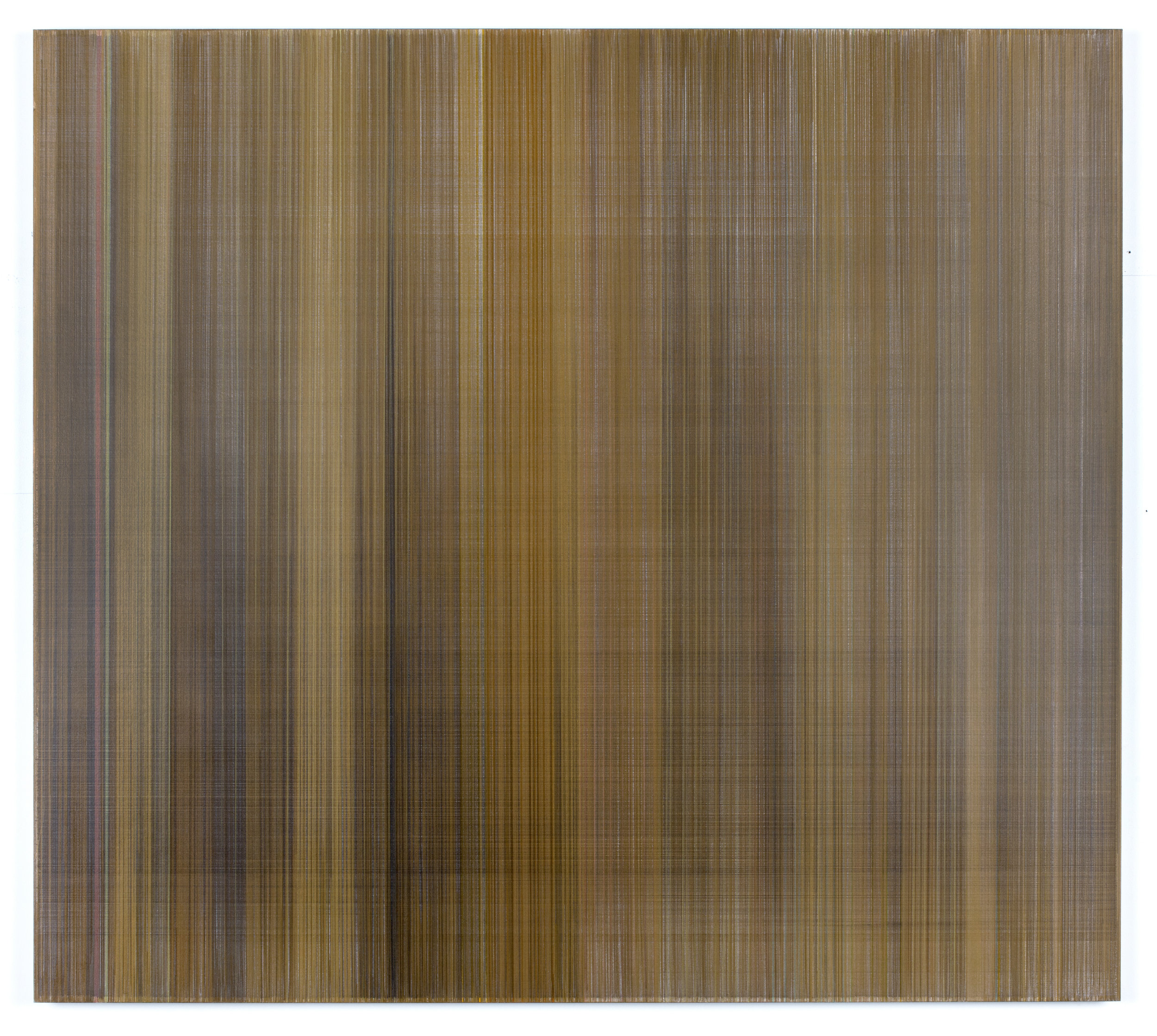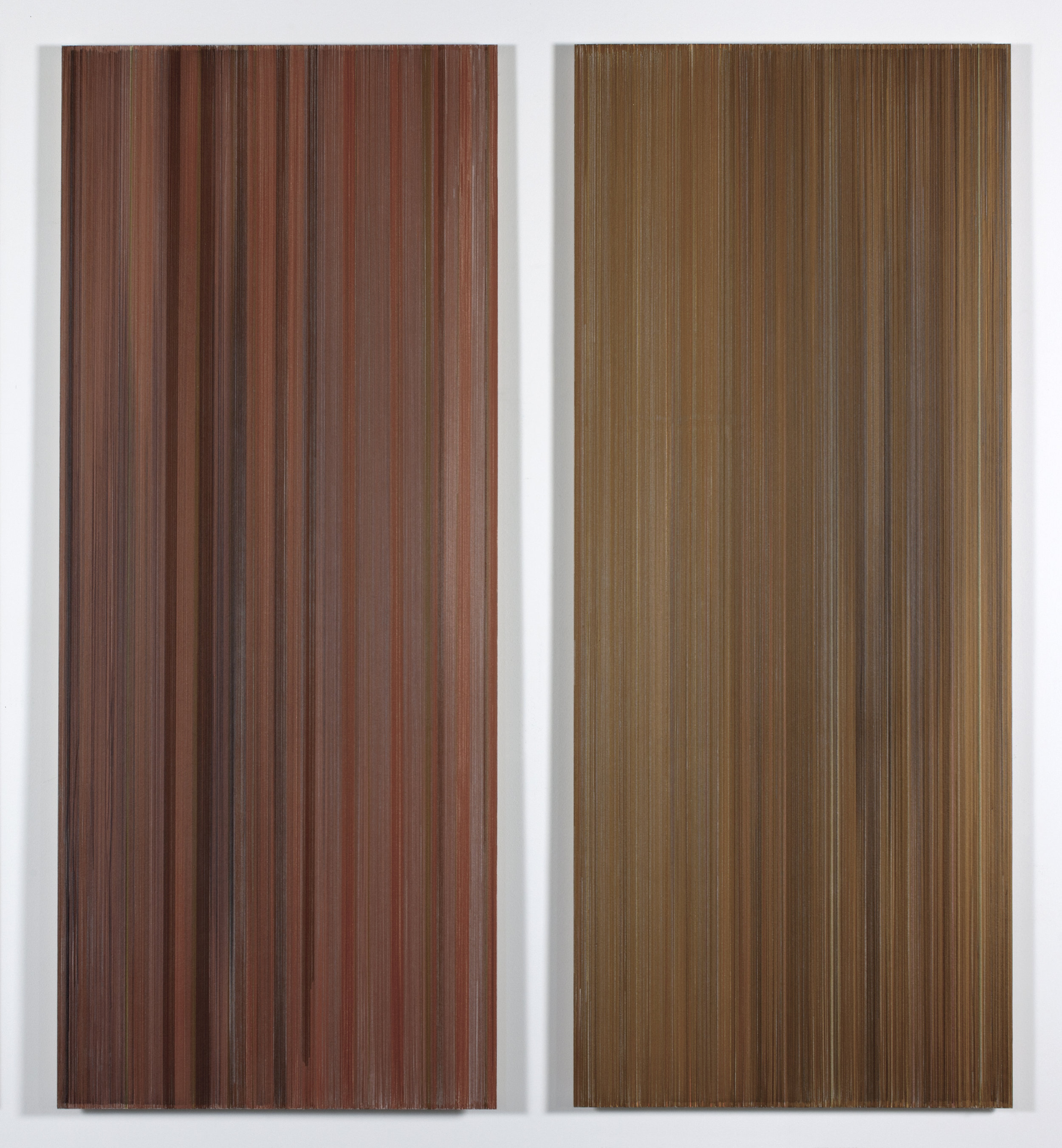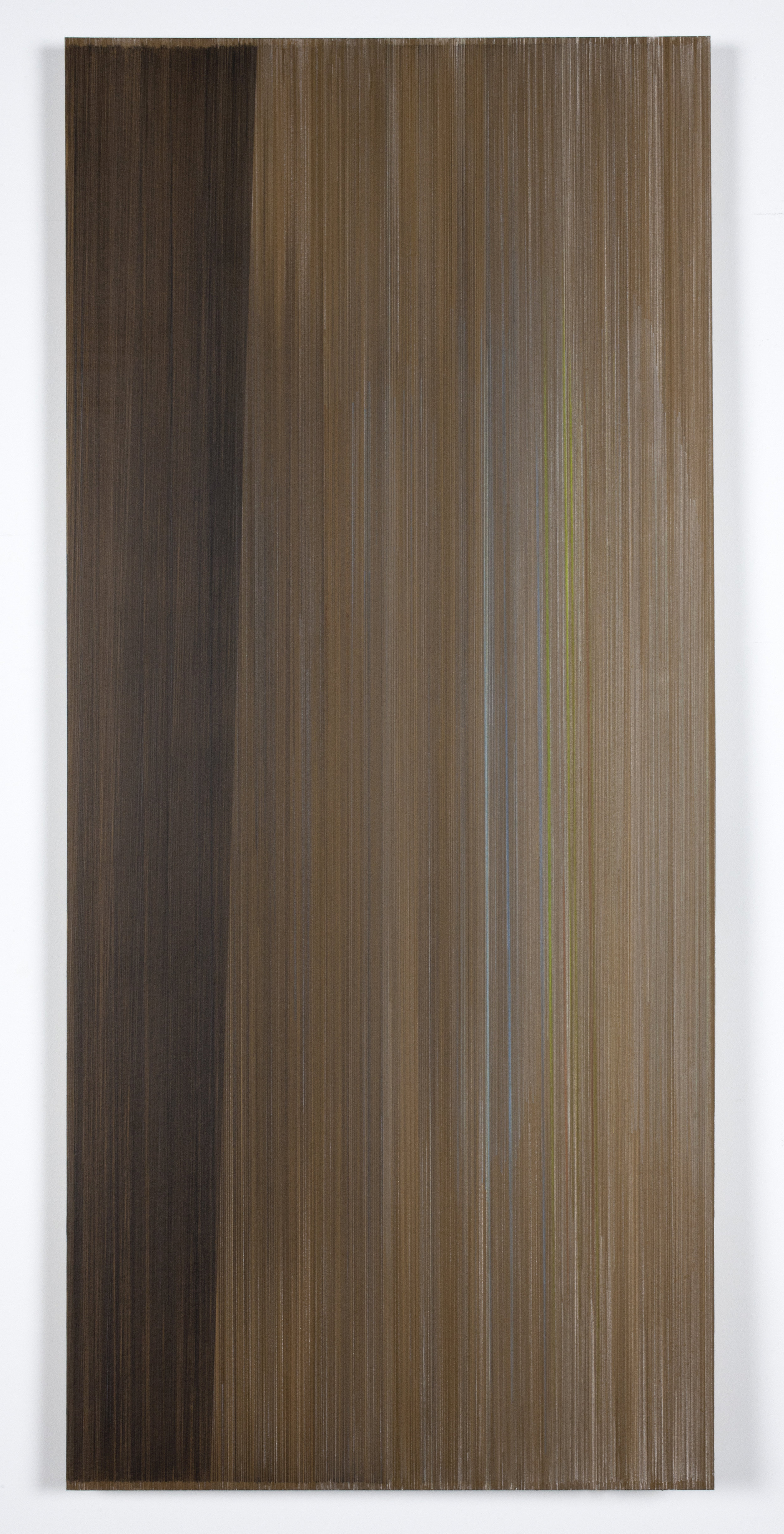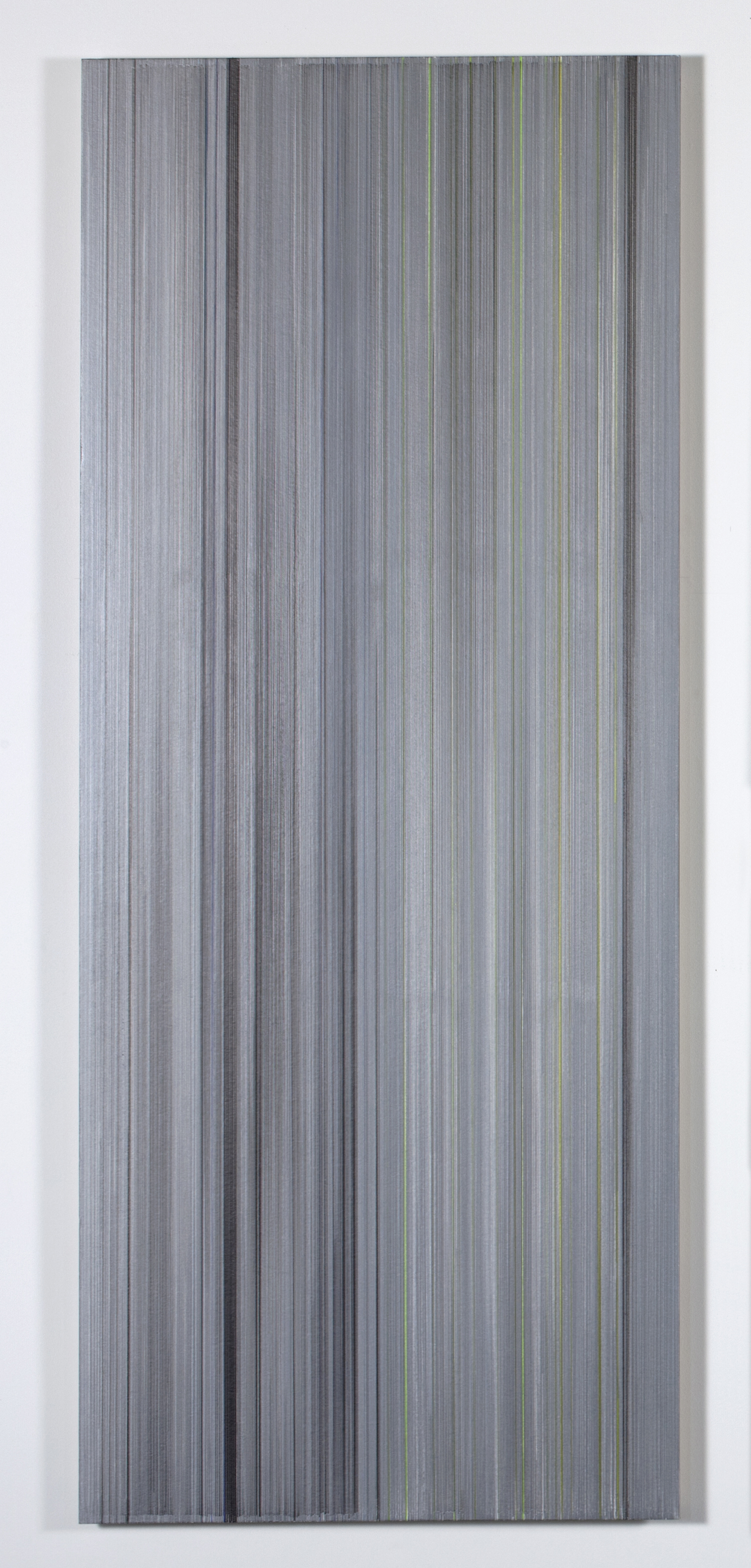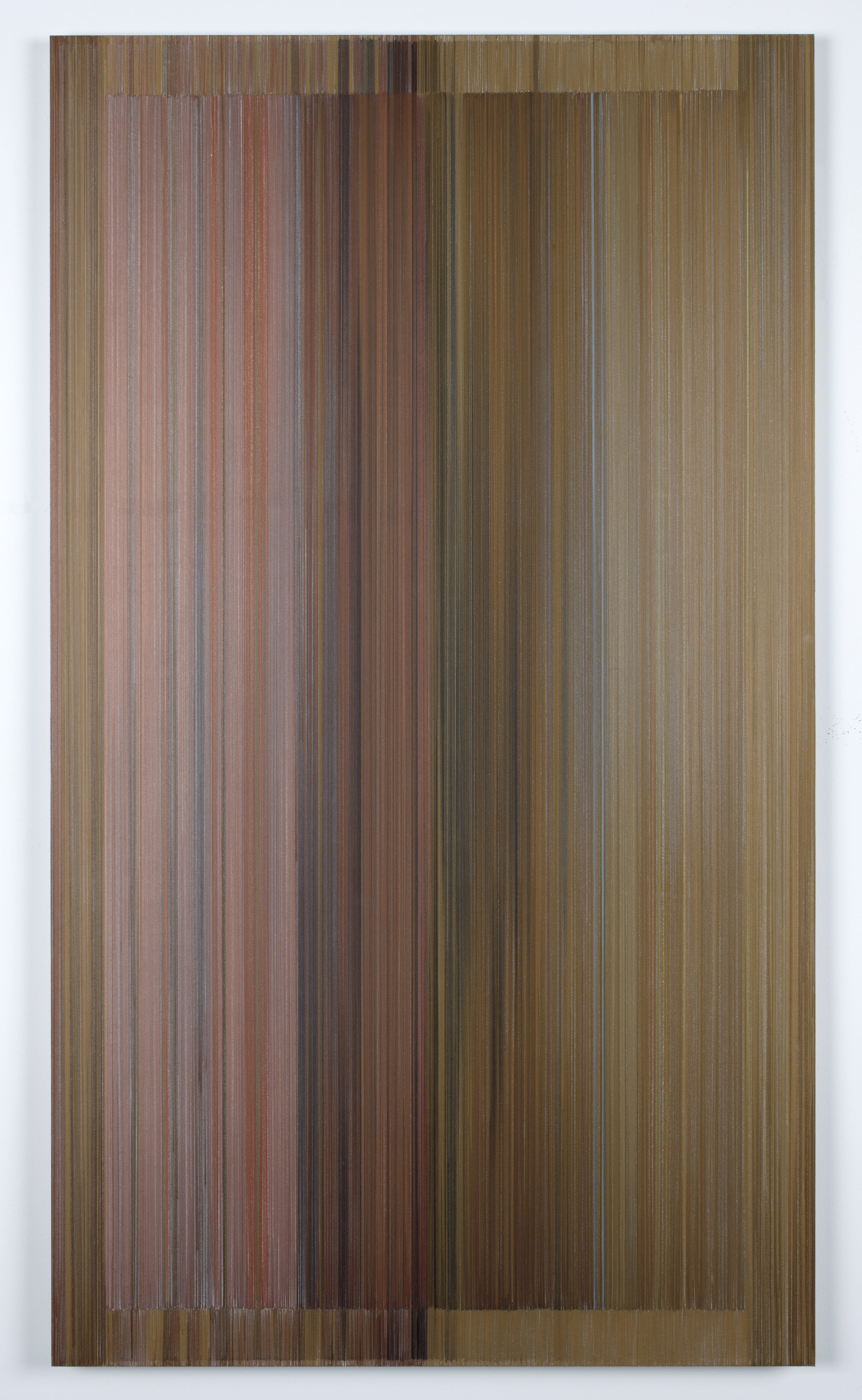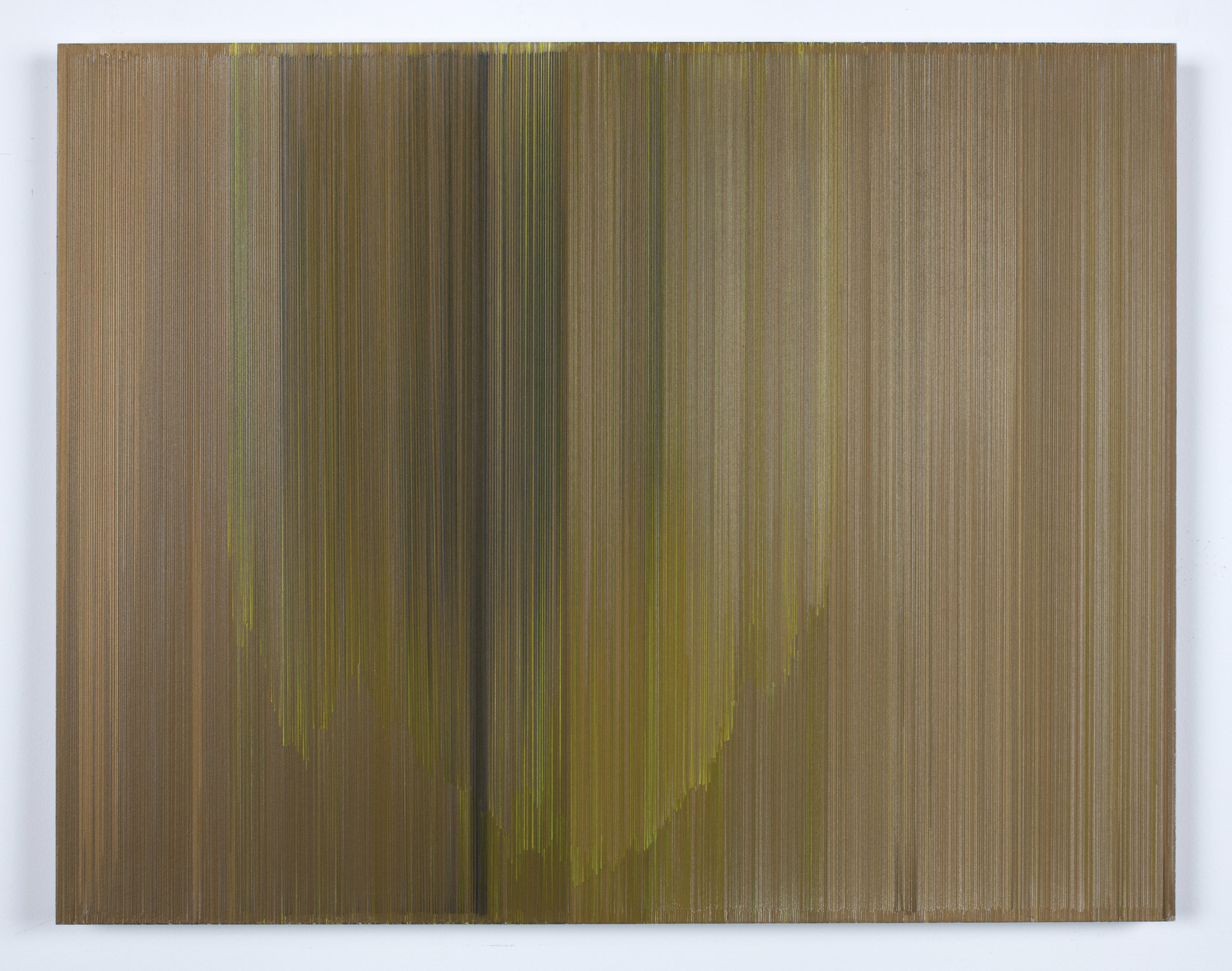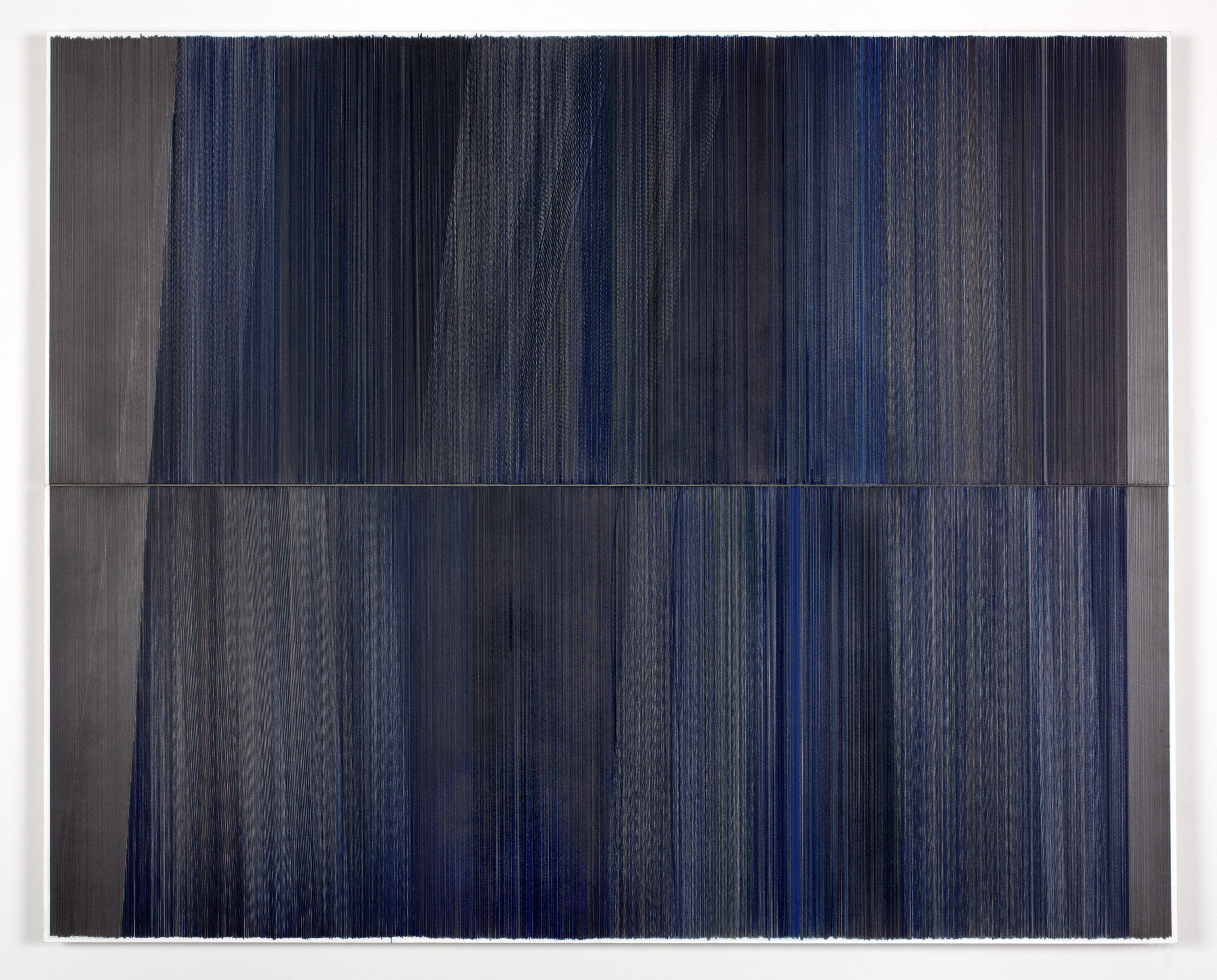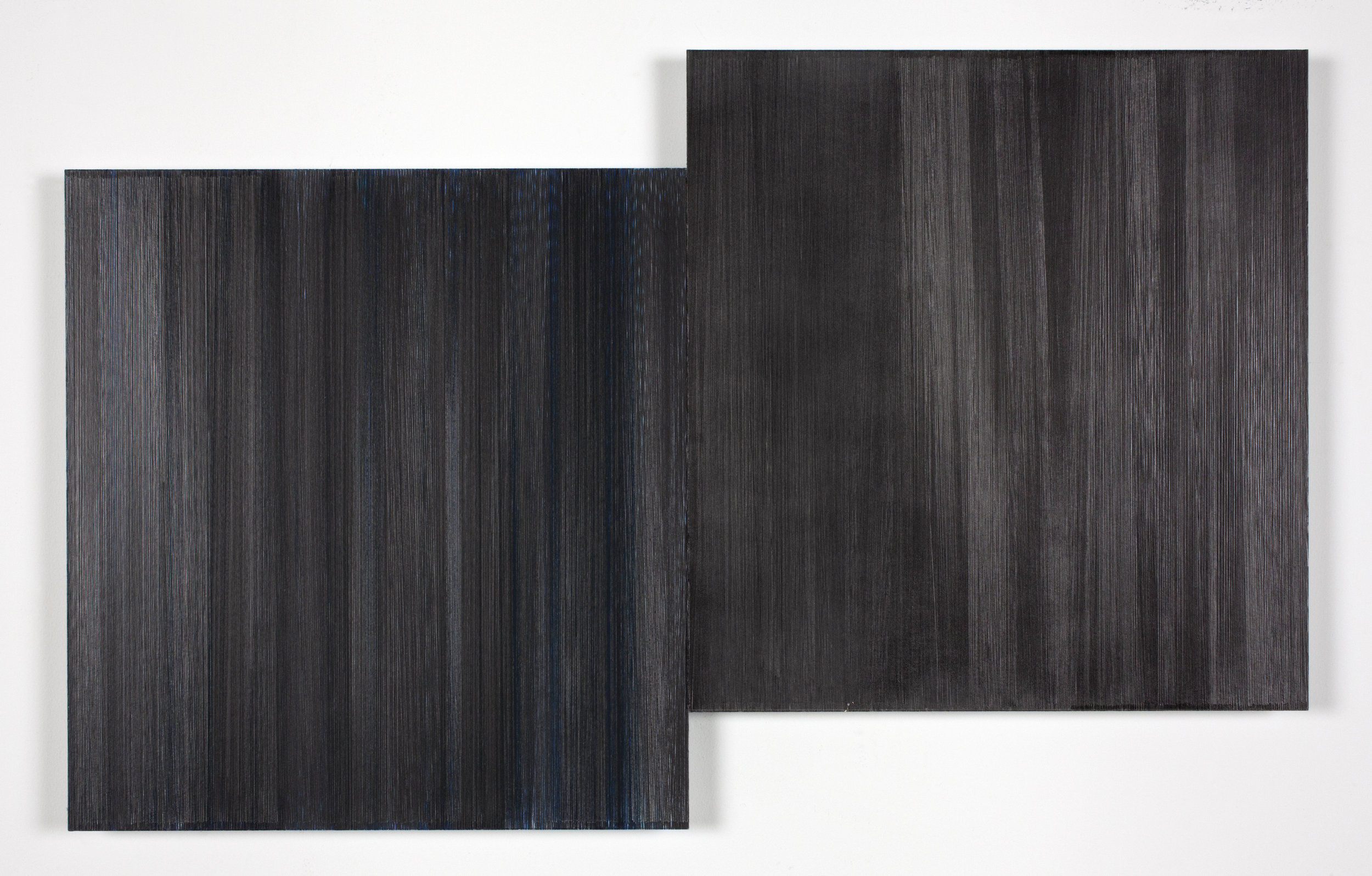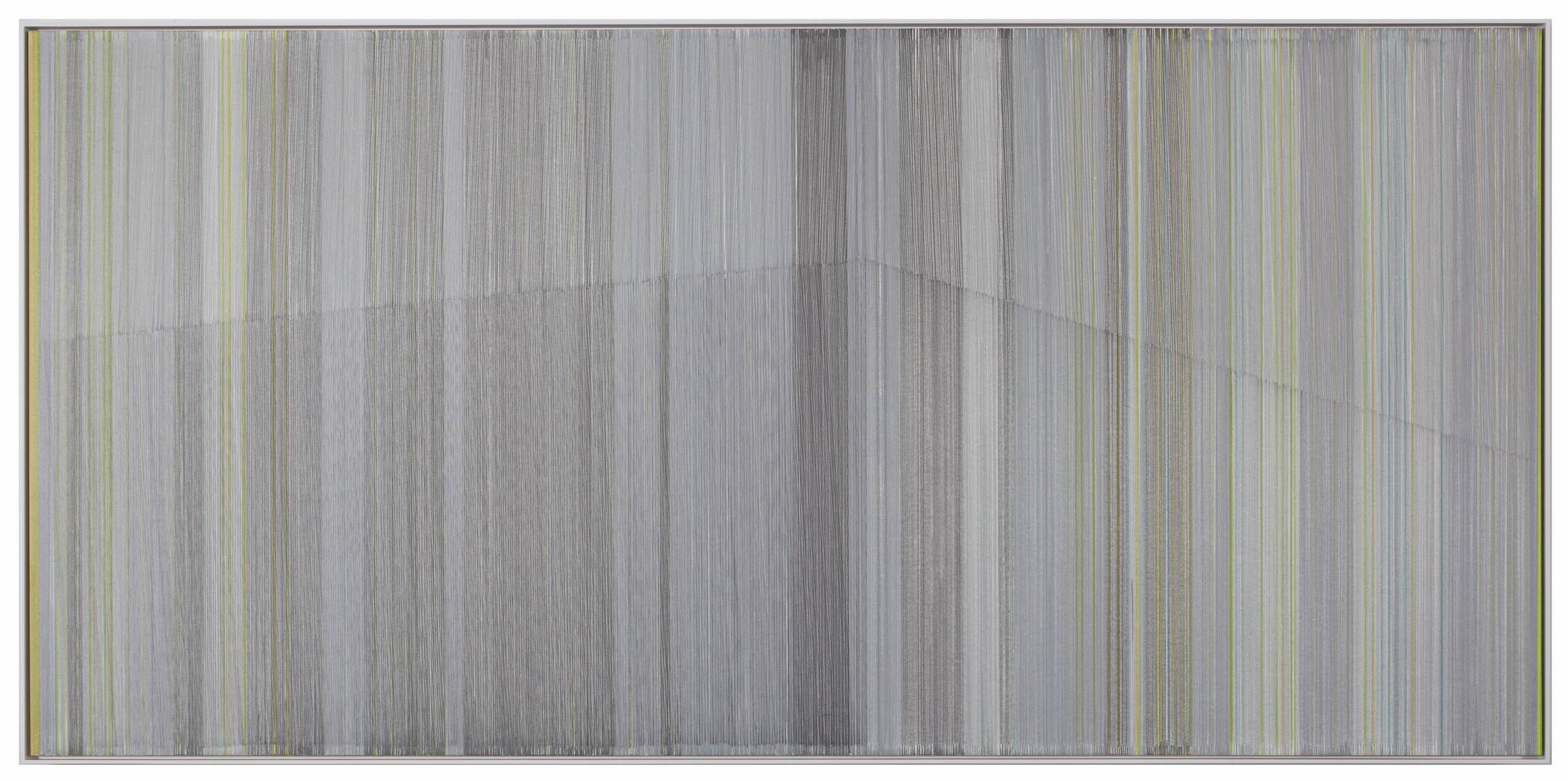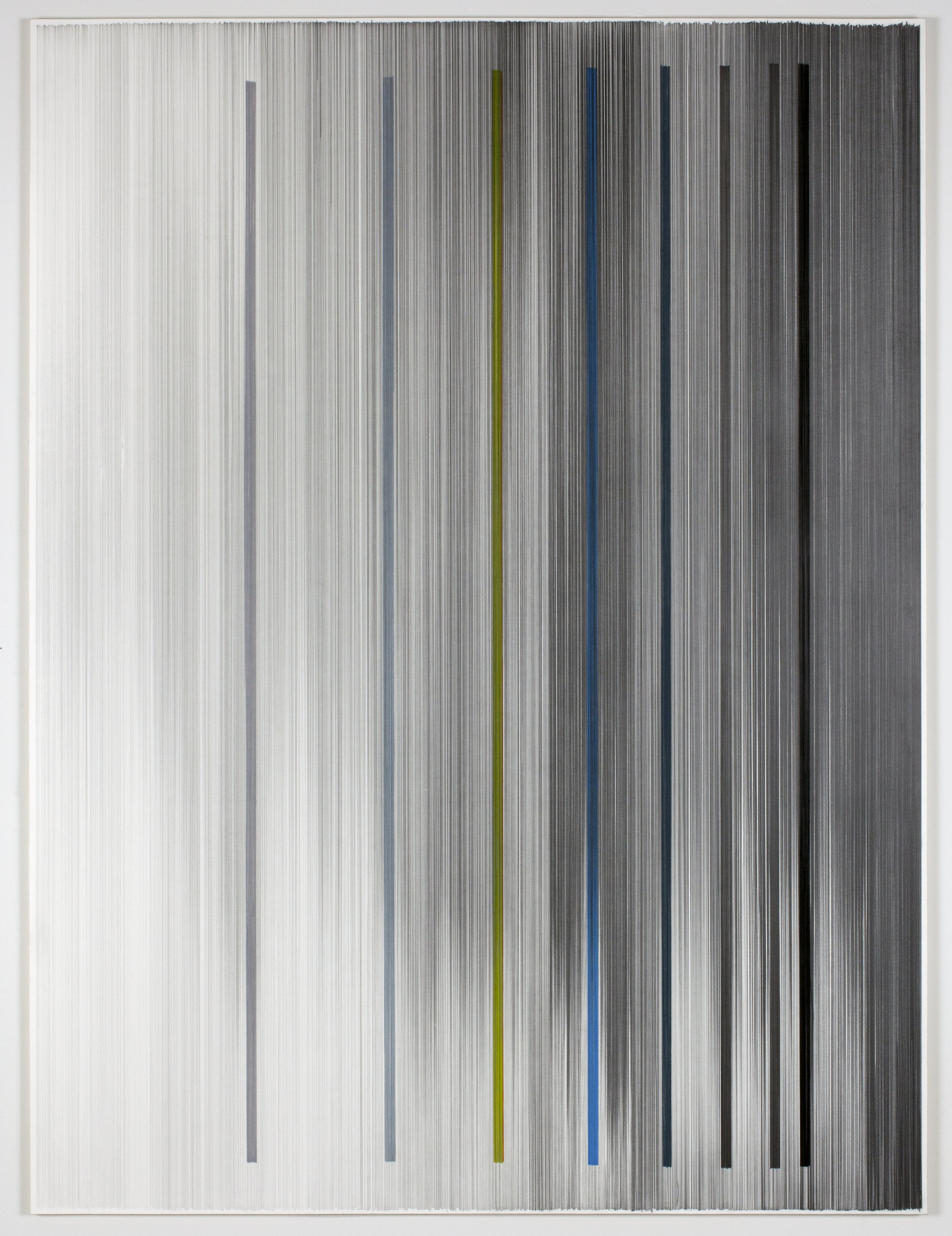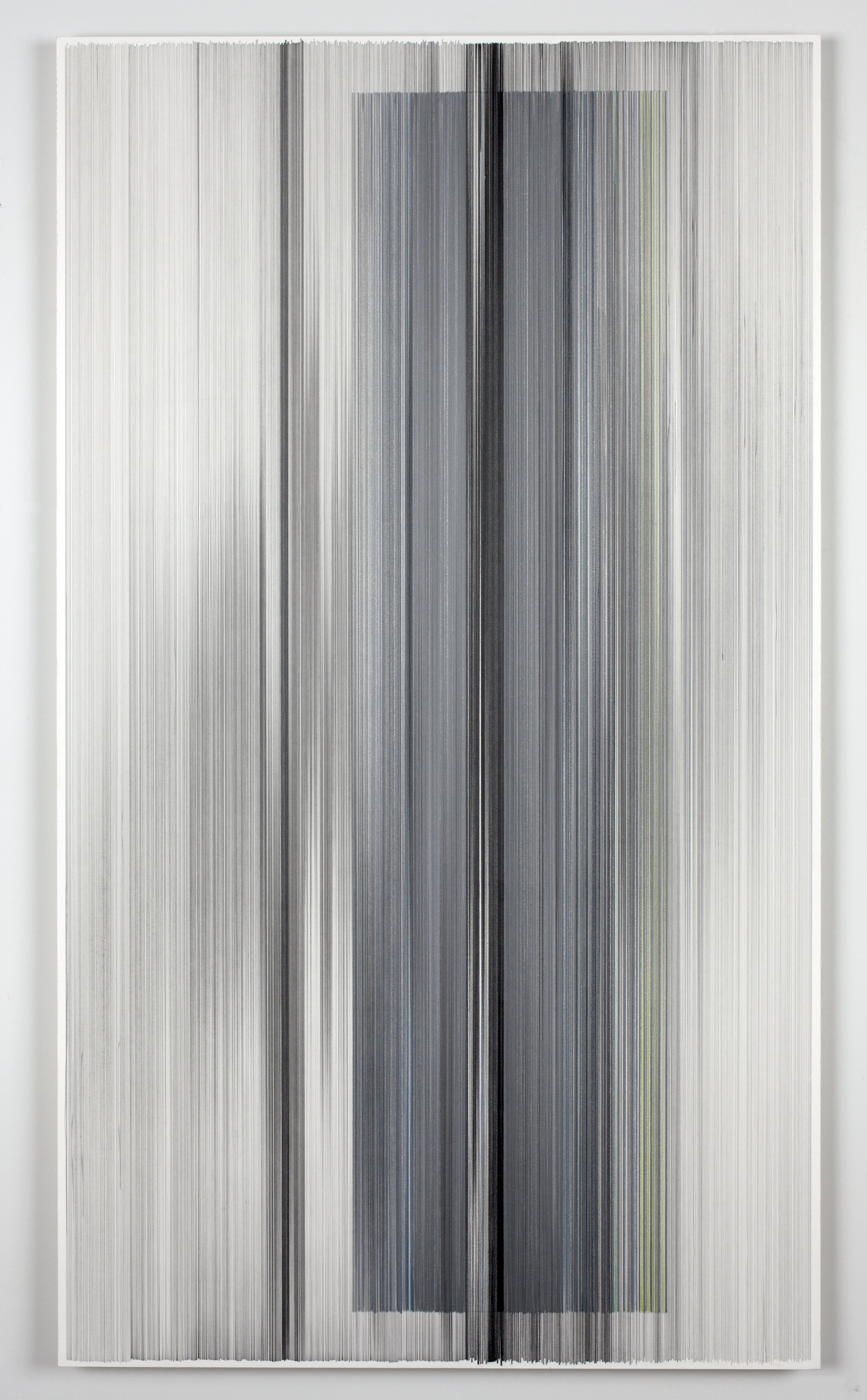late 2016 drawings
PLACE
The dynamic character, history and light of the Hudson River Valley have imbued a sense of the sublime on a lineage of artists. Like the Hudson River School painters Fredric Edwin Church and Thomas Cole, and contemporary artists Agnes Martin and Vija Celmins, Anne Lindberg understands her studio practice as a paced and daily conversation with place, in body and mind. Having recently relocated to upstate New York from the Midwest, Lindberg has seen her practice deepen in ways conjoining these personal and abstract voices with a new sense of profundity.
COLOR
Her newest body of work from late 2016 has an atmospheric inclination towards rhythmic layers of slow interwoven tones allowing luminous colors to permeate the drawings. Lindberg physically embeds lines into pliant mat board, creating a sensual, yet metaphysical, weight that carries with it a quiet reserve and formal abstraction. Each mark accumulates with a strong impulse to speak from a deep place within herself that is private, vulnerable and fragile while also being perceptive to the human condition. In her new work, Lindberg uncovers an alchemy that can exist in everyday life.
LIGHT
Lindberg’s work has always held a gradient light, with a slow and telling use of tone to find meaning. The light in her work - the two-dimensional drawings on mat board and her spatial installations with chromatic thread - is built into the work as it’s made, yet also seems to emanate from the work. The Hudson Valley landscape has sparked a renewed attention to luminosity on vast terms. This place has a warm and compounded light that she says, “seems always to come from the side and in layers or veils as it incrementally changes. The ecosystem of the river, latitude, proximity to the ocean and the matrix of wetlands in the valley give the light intricate dimension. It often has an amber cast; it’s a scattered golden light.” Essentially, this documentation of the sun in context, in all its various capacities, elicits qualities ranging from the emotional to the tangential.
LANGUAGE
These drawings generate fundamental questions about time, causality and sequence. Here, language is a compass. As Lindberg conjures meaning, literary reference plays a newfound role in her studio life. Titles of the new work are fragments of language, sometimes lines of published poetry yet most often formed by the artist. She is carefully bringing one closer to the unspoken meanings of these infused fields.
